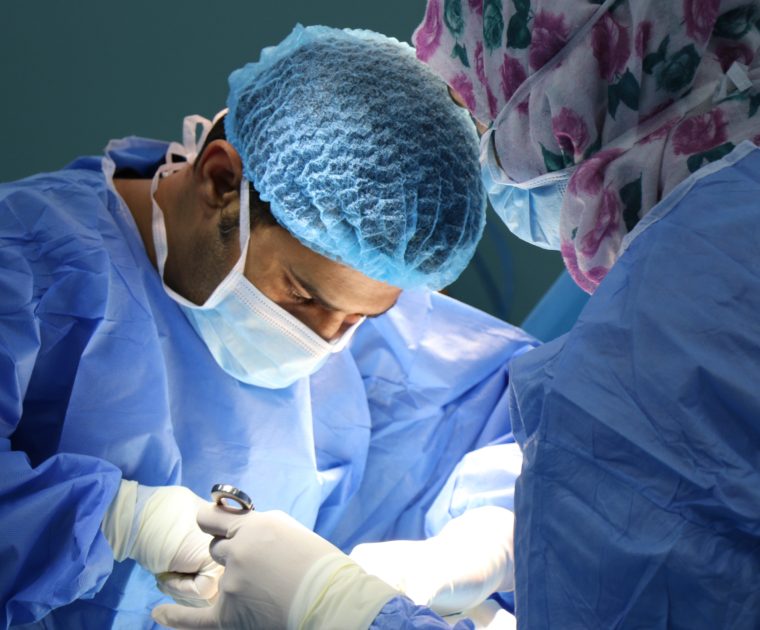Glaucoma is a condition that affects the eye’s optic nerve. Often, this is caused by pressure inside the eye that is too high.
Click here for a refresher on basic eye anatomy.
What is the importance of the optic nerve?
When we view an object, an image is first received by the retina at the back of the eye. That signal is then condensed into a single nerve that transmits the vision information from the eye to the brain. At its healthiest, the optic nerve has over one million fibers that allow us to enjoy the details of the world.
As an example, let’s imagine that the eye is like a digital camera. In order to interpret the pictures we take, the camera needs to first be plugged into our computer. In this case, the computer acts like our brain. The optic nerve is like the USB cable that connects the eyeball to the brain.
How is the eye damaged from glaucoma?
All of us are constantly producing fluid on the inside of our eyes. At the same time, that fluid is constantly leaving the eye through a series of filters (called the “trabecular meshwork”). This balance between the production and escape of fluid causes it to maintain a certain level of fluid pressure. More specifically, we call this “intraocular pressure.”
Here’s another example to illustrate the idea of intraocular pressure. Imagine yourself filling a beach ball with air or water. If you only fill it a small amount, the ball will be very soft and the pressure inside will be low. On the other hand, if you fill it as much as possible, the ball will be rigid and the pressure inside will be high.
If the pressure inside of the eye is too high for too long, the optic nerve may be damaged.
Over time, increased intraocular pressure can cause permanent loss of vision.
What amount of intraocular pressure is considered normal?
The answer to this question is not 100% straightforward.
Amongst the population, the normal range of intraocular pressure is between 10 and 21 mmHg. The majority of people fall at the higher end of this spectrum.
Does this mean that you have glaucoma if your pressure is outside of the expected range? Not exactly.
There are people who have an intraocular pressure of 18 mmHg who have glaucoma. Likewise, there are people who have an intraocular pressure of 26 mmHg who don’t.
Confused? Keep reading.
How do I know if I am at risk for glaucoma?
Unlike other medical conditions, diagnosing glaucoma is not as straightforward as ordering a single test and getting a “positive” or “negative” result. Instead, we consider a long list of risk factors to decide if we think that a patient is at high or low risk for vision loss over time.
These risk factors include:
- Abnormal appearance of the optic nerve
- Higher intraocular pressure
- Older age
- Positive family history
- Thinner measurement of the central cornea
- Latin, African, or Asian ancestry
- Chronic use of corticosteroid or other medications
- High myopia (near-sightedness)
- Diabetes or other medical conditions
Research is always being performed to discover new risk factors and ways to prevent glaucoma damage.
Once we have suspicion that a person is at risk for glaucoma, we often will refer to them as a “glaucoma suspect.” This patient may or may not ever develop true glaucoma.
If we can demonstrate that the optic nerve has been damaged in a typical fashion, with or without noticeable changes to the vision, we will use the diagnosis of “glaucoma.”
How is glaucoma diagnosed?
Below are the tools that I use to follow my patients who either have glaucoma or at risk for it.
Comprehensive Eye Exam: Even in our modern age of technology, a periodic eye exam is crucial to diagnosing and following glaucoma. These exams may or may not include dilation. Through serial exams, we are able to follow the intraocular pressure and monitor the appearance of the optic nerve.
Optical Coherence Tomography (OCT): This revolutionary technology allows us to take photos of the optic nerve with incredible detail. OCT images provide information about the thickness of the optic nerve tissue. In most cases, we consider thicker tissue to be healthier. Over time, we can compare your photos to see if there is gradual loss of healthy tissue.
Visual Field: This test allows us to see if there is any loss of your peripheral or central vision. Often the vision changes in glaucoma start in the sides of the vision and are not noticeable by you until quite a bit of damage is done. Taking this test is sort of like playing a video game where you click a button every time you see a light. Again, over time we can judge of there is any gradual loss of vision.
Gonioscopy: By using a special contact lens with mirrors, we can look at the front filters of the eye (the “trabecular meshwork”) to ensure that the anatomy is normal. Certain findings on this test can increase your risk for glaucoma.
Pachymetry: With a small probe, we can measure the thickness of the cornea in front of your eye. It is well described that a thinner cornea can increase the risk of glaucoma.
Are there different types of glaucoma?
Yes, there are.
The most common type of glaucoma is open-angle glaucoma. Unless the intraocular pressure is unusually high, vision changes related to this condition often occur gradually over years.
Another type of glaucoma is narrow-angle glaucoma. Most commonly, this occurs in people who are far-sighted (hyperopic) because these patients tend to have eyes that are smaller than average. As the eye gets smaller and shorter, its different anatomical structures must fit into a tighter space. Because of this, the eye’s own structures may block the filters (trabecular meshwork) that allow fluid to exit the eye. This can make the intraocular pressure rise intermittently over time and damage the optic nerve.
Occasionally, a narrow angle can lead to a emergency condition called acute angle closure if the trabecular meshwork becomes completely blocked and fluid has no way to exit the eye. In this case, the pressure inside the eye may rise significantly – even to double or triple what is normal. The symptoms of acute angle closure include severe eye pain, decreased vision, redness, haziness of the front part of the eye, and change in the size of the pupil. If you suspect this condition, visit your ophthalmologist or local emergency room immediately! Often a laser treatment is recommended to treat this condition in the emergency setting. The same laser procedure can also be performed as prophylaxis in patients who are at risk for this condition.
Glaucoma can also be caused by traumatic injuries to the eye, inflammatory diseases, and other medical conditions.
How is glaucoma treated?
Treatment for glaucoma focuses mainly on lowering the intraocular pressure. It is important to realize that a pressure that is safe for one patient may not be safe for another. Therefore, we take an individual approach to understanding each patient’s treatment goals.
Eye drops: Usually the first line of therapy for patients with glaucoma is to use eye drops designed to lower the intraocular pressure. There are several different types. Some work by decreasing the fluid that is produced in the eye. Others allow fluid to leave the eye more efficiently.
If you are using drops to control your eye pressure, it is important to remember to use them every day as recommended. If you forget to use your drops, your pressure may likely return to the level it was at before treatment. Over time, this could lead to glaucoma damage!
Laser: There are a few different laser procedures that can help lower intraocular pressure or prevent glaucoma damage. These treatments can be very helpful in patients who can’t remember their eye drops or who have not shown an adequate improvement on drops alone.
Surgery: Several different types of glaucoma surgeries exist for those patients who have not shown adequate improvement with less aggressive therapies.
If you have glaucoma, talk to your doctor about the kind of treatment that is right for you!




